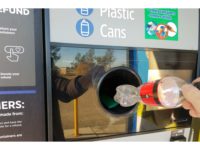Active and intelligent packaging is a top priority in fight to save food waste
AIPIA/ITENE road-mapping event at interpack confirms importance of Active & Intelligent Packaging technologies

Results now published from a major road-mapping exercise, held during the recent interpack exhibition in Dusseldorf, Germany, clearly show broad support for the development and implementation of Active and Intelligent Packaging technologies as a major tool to fight food waste, according to event co-hosts , AIPIA (aipia.info) and Packaging, Transport and Logistics Research Center, ITENE (itene.com).
With more than 60 attendees from all parts of the packaging sector, the two hour event used interactive sessions to help identify both the challenges facing all parts of the supply chain to reduce food waste and identify key drivers to ensure implementation of ready to market Active & Intelligent Packaging solutions.
“As 2014 is the European Year Against Food Waste it was a very good time to bring industry experts together to discuss the topic in this way,” says Active & Intelligent Packaging Industry Association director Eef de Ferrante. “We have a clearly defined timescale of 2 -5 years, and a clear map of which Active and Intelligent Packaging technologies are regarded as necessary to achieve a significant reduction in food waste.”
The EU points to inadequate packaging, confusion about “best before” and “use by” labels, the lack of awareness, stock management inefficiencies, overproduction and inadequate storage, among others, as the main causes of food waste.
According to EU published data, about 90 million tonnes of food is wasted annually in Europe and about a third of the food for human consumption is wasted globally, what means around 1.3 billion tonnes per year. Moreover, 40% of these food losses in industrialized countries occurs at retail and consumer level. If no actions are taken, food waste generation is expected to climb to 126 million tonnes per year by 2020 according to the European Commission.
Jorge García, business director of ITENE, speaking during the event, stressed the importance of raising consumer and industry awareness, as well as the retail and the consumer understanding of how packaging can play a key role to avoid food losses; and also how the packaging industry can offer different safe, cost-effective and environmental compatible packaging solutions for reducing food losses.
“The findings clearly show that active technologies such as oxygen and ethylene scavenging, antimicrobial and anti-fungal, humidity control and anti-oxidants, for example; and smart solutions such as freshness indicators, time/temperature indicators and all types of traceability products have benefits for the whole supply chain, not just individual elements of it. In particular consumer behavior- such as weekly rather than daily shopping, aging populations and more single person units - fits exactly with the kind of requirements Active and Intelligent Packaging offers,” explained Garcia
He continues, “Active packaging can double the effective shelf life of many perishable products compared to conventional packaging, while smart packs offer clear signals about the condition of the product, without the use of arbitrary ‘best before’ labels. For instance, in the active packaging field ITENE has developed a new active technology that extends the shelf life of red meat from 7 to 14 days by adding natural active substances to the packaging material. In the smart packaging area an innovative colorimetric indicator has been created to detect poultry products spoilage which informs the consumer by an easy and intuitive label color change”
Eef de Ferrante of AIPIA added, “These and many new developments in, for example, nano barrier technologies and materials, will be major topics of conversation and presentation at the up-coming AIPIA World Congress this autumn in Chicago (November 2-4), taking place during Pack Expo International and PharmaExpo. It is a very dynamic sector with fresh ideas coming constantly.”
Looking for a reprint of this article?
From high-res PDFs to custom plaques, order your copy today!





